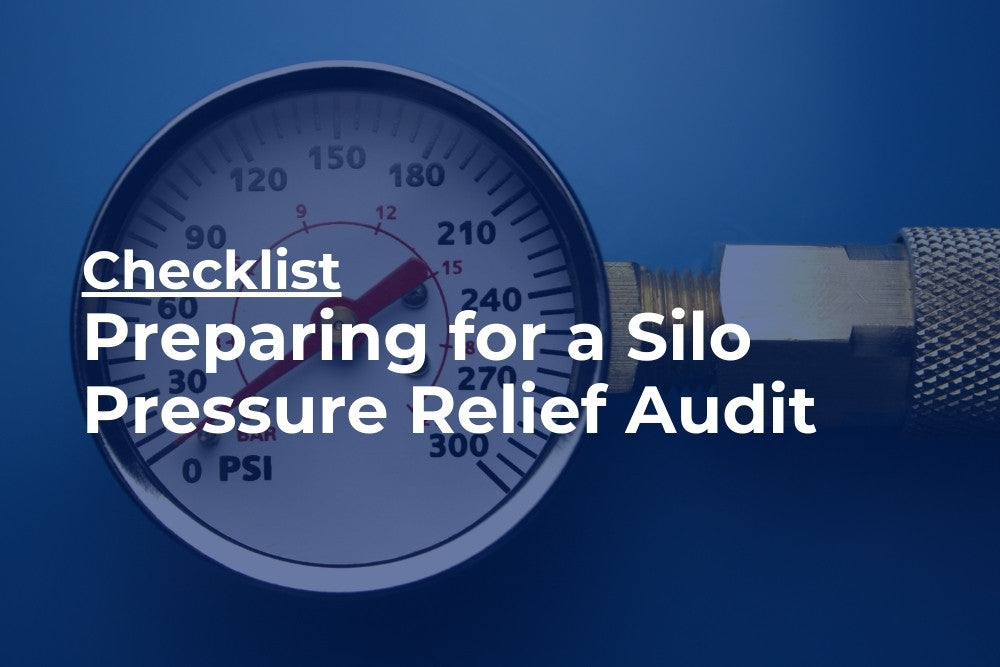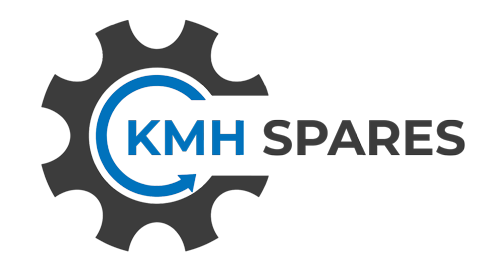
Checklist: Preparing for a Cement Silo Pressure Relief (PRV) Audit.
Why do you need a Cement Silo PRV audit?
Pressure Relief Valves (PRVs) are critical safety components in storage silos, protecting them from over-pressurisation, which can lead to catastrophic failures. In the EMEA region, ensuring that PRVs comply with European safety standards, such as those outlined in EN 14491:2012 and EN 14797:2006, is crucial. Regular audits of PRVs are necessary to verify that these valves are functioning correctly and meet all regulatory requirements. Below is a comprehensive checklist to help you prepare for a successful PRV audit.
1.) Documentation Review
Operational Manuals and Specifications:
Ensure that all PRV operational manuals and technical specifications are up-to-date and readily available. These documents should detail the valve's pressure settings, material compatibility, and installation requirements.
Maintenance Records:
Review and organise all maintenance records, including inspection reports, repair logs, and calibration certificates. These records should demonstrate that the PRVs have been regularly maintained according to the manufacturer’s guidelines and industry standards.
Compliance Certificates:
Gather all certificates of compliance with relevant European standards, such as EN 14491:2012 (Dust Explosion Venting Protective Systems) and EN 14797:2006 (Explosion Venting Devices). These certificates should confirm that the PRVs have been tested and approved for use in explosive atmospheres.
2.) Visual Inspection
External Condition
Inspect the external condition of each PRV for signs of corrosion, wear, or damage. The valve body, connections, and seals should be intact and free from any visible defects.
Labelling and Identification
Check that all PRVs are clearly labeled with their model number, set pressure, flow capacity, and date of the last inspection. Ensure that identification tags are legible and securely attached.
Installation Conformance
Verify that the PRVs are installed according to the manufacturer’s recommendations and comply with the European Standard EN 13136:2001, which provides guidelines on pressure relief systems. This includes checking the alignment, mounting, and accessibility of the valves.
3.) Functional Testing
Pressure Setting Verification
Test each PRV to confirm that it activates at the specified set pressure. This can be done using a test rig or by conducting an in-situ test if applicable. Record the results for audit purposes.
Operation of Secondary Components
Check the functionality of any secondary components associated with the PRV, such as discharge piping, rupture discs, or secondary pressure monitoring devices. These components should operate seamlessly with the PRV to ensure proper pressure relief.
4.) Calibration and Adjustments
Calibration Check:
Verify that the PRVs have been calibrated within the last year, as per industry standards and manufacturer guidelines. Calibration should be performed by a certified technician, and a calibration certificate should be available for each valve.
Adjustments for Wear and Tear:
Inspect the internal components of the PRV, such as springs and diaphragms for wear and tear. If necessary, make adjustments or replace parts to maintain the valve’s accuracy and reliability.
5.) Compliance with Regulatory Standards
EN 14491:2012 Compliance
Ensure that all PRVs installed on silos handling combustible dust or powders comply with the explosion venting standards set by EN 14491:2012. This includes verifying the venting capacity and installation method.
EN 14797:2006 Compliance
For PRVs acting as explosion venting devices, confirm that they meet the requirements of EN 14797:2006. This standard specifies the design, testing, and application of explosion venting devices in industrial environments.
Local Regulations
Check for any additional local regulations in your country that may apply to PRV installation and maintenance. Ensure that all PRVs meet these local requirements, especially in regions with stricter safety laws.
6.) Preparing for the Audit
Pre-Audit Inspection
Conduct a thorough pre-audit inspection using this checklist to identify and rectify any potential issues before the official audit. Address any non-compliance or maintenance needs immediately.
Maintenance Briefing
Brief your maintenance and safety teams on the upcoming audit. Ensure they are familiar with the audit process, the specific PRVs to be inspected, and the documentation that needs to be presented.
7.) Post-Audit Follow-up
Audit Report Review
After the audit, review the auditor’s report carefully. Address any findings or recommendations as soon as possible to maintain compliance and enhance the safety of your silo operations.
Repair/Upgrade the Pressure Relief Valve (PRV)
Implement a continuous improvement plan based on audit feedback. This may involve updating maintenance schedules, retraining staff, or upgrading PRVs to newer models that offer enhanced safety features.
Documentation update
Update all relevant documentation, including maintenance logs, compliance certificates, and operational manuals, to reflect any changes or improvements made following the audit.
What the PRV Audit provides for your business...
Preparing for a PRV audit is a critical step in ensuring the safety and efficiency of your storage silos. By following this checklist, you can ensure that your PRVs meet European standards, are properly maintained, and are ready for inspection. Regular audits not only help you stay compliant with regulations but also protect your operations from potential risks associated with over-pressurisation and explosion hazards.
